Former manager Bobby Bragan once described baseball statistics like this: “Say you were standing with one foot in the oven and one foot in an ice bucket. According to the percentage people, you should be perfectly comfortable.”
Good one. Nonetheless, baseball is a numbers game. As we peel away from the Astros’ cheating scandal and look forward to the start of spring training, let’s dig into one key number for each team from the 2019 season and what it means for 2020 or how the team addressed it so far in the offseason. We’ll tackle the American League today.
AL East
Baltimore Orioles
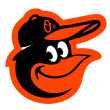 The number: 305. The Orioles set the record for home runs allowed.
The number: 305. The Orioles set the record for home runs allowed.
Whatever you do, do not look at Dan Straily‘s 2019 numbers. It’s Year 2 of the Long Rebuild and it’s going to be pretty ugly once again at the major league level. The Orioles traded away Dylan Bundy, one of their two reliable starters. We’ll see if out-of-nowhere All-Star John Means can repeat his surprising rookie season (he had a 4.85 ERA in the second half). The bullpen almost by default has to improve on its ghastly 5.79 ERA. Still, there doesn’t appear to be much immediate help in the farm system. Top pitching prospects Grayson Rodriguez and DL Hall are a couple years away.
Maybe the Orioles add a couple veteran starters before spring training, although given that they didn’t want to pay Jonathan Villar, it seems like they’re willing to take their lumps in order to save money on payroll and put a little more cash into the pockets of ownership. The non-roster invites to spring training include a couple of pitchers with major league experience like Ty Blach and Rob Zastryzny, but those aren’t difference-makers. The Orioles probably won’t allow 305 home runs again — but they might go 2-17 again versus the Yankees.
Boston Red Sox
 The number: 6.4 WAR. That’s the difference between the combined pitching and position player WAR on FanGraphs between the 2018 Red Sox and the 2019 Red Sox. The actual difference in wins: 24.
The number: 6.4 WAR. That’s the difference between the combined pitching and position player WAR on FanGraphs between the 2018 Red Sox and the 2019 Red Sox. The actual difference in wins: 24.
The 2019 Red Sox certainly were not as good as the 2018 club that won 108 games. But 24 wins worse? Well, yes. And no. The numbers at FanGraphs suggests the 2019 Red Sox should have been just six or seven wins worse. So what was the difference? The 2018 Red Sox were clutch. The 2019 Red Sox were not.
As my colleague Brad Doolittle would point out, WAR doesn’t always do a very good job of explaining what happened. We can use Win Probability for more context. WPA doesn’t translate directly to wins, but it helps us understand what happened between the two seasons. Red Sox position players were 4.6 wins worse via WAR in 2019, but 7.5 wins worse via WPA. Red Sox pitchers were just 1.8 wins worse via WAR in 2019, but 16.4 wins worse via WPA.
Taking a closer look at the pitching staff, in high-leverage situations (when the game is close) in 2019, Red Sox pitchers allowed a .790 OPS, worse than they fared in medium-leverage (.760) or low-leverage (.746) moments. In 2018, the staff allowed a .649 OPS in high-leverage situations, much better than medium-leverage (.734) or low-leverage (.689). The hitters similarly performed better in high-leverage situations in 2018 (.854 OPS versus .801 in medium and .762 in low). Hmm, maybe that sign stealing did help.
Now, obviously talent can affect the results in those situations. This isn’t simply just a case of good luck versus bad luck. The clutch ability of the 2020 Red Sox, however, probably lies between the two extremes. Which means the Red Sox should be a strong playoff contender, at least if they keep Mookie Betts and especially if Chris Sale bounces back.
New York Yankees
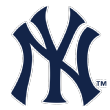 The number: 4.51. The Yankees ranked sixth in the American League with a 4.51 rotation ERA.
The number: 4.51. The Yankees ranked sixth in the American League with a 4.51 rotation ERA.
How much will Gerrit Cole improve things? While the rotation wasn’t as bad as the pundits often advertised (the AL average starter ERA was 4.76), the Yankees also ranked just 11th in the AL in innings pitched from their starters — heck, Orioles starters threw more innings. Yes, that speaks to the depth and quality of the bullpen (and the use of Chad Green as an opener), but this was not a group that pitched deep into games.
CC Sabathia, Jonathan Loaisiga, Luis Severino, Stephen Tarpley, Jonathan Holder, Jordan Montgomery and Nestor Cortes Jr. combined to make 33 starts. That’s who Cole is replacing. That group combined to pitch 138⅓ innings in those starts, allowing 85 runs with a 5.07 ERA. Cole pitched 212⅓ innings in 33 starts for the Astros, allowing 66 runs with a 2.50 ERA. If Cole replicates his Houston numbers and everyone else puts up the same results, the rotation ERA drops to 3.91 (while throwing more innings). The rotation will be much better and potentially the best in the league if Severino returns in good health.
Tampa Bay Rays
 The number: 3.66. The Rays had the best bullpen ERA in the majors — while also throwing the most innings.
The number: 3.66. The Rays had the best bullpen ERA in the majors — while also throwing the most innings.
Normally, you would expect the league’s best bullpen to regress — such is the unpredictable nature of relievers. In the case of the Rays, however, the bullpen (and the entire pitching staff) may be even better, which is why the Rays should once again be a playoff contender despite lacking a high-powered offense. Building a staff in 2020 is all about depth — rare exceptions like the 2019 Nationals excluded. The Rays currently have 20 pitchers on the 40-man roster. All are good. OK, Brendan McKay hasn’t quite proven himself in the majors, but he’s a polished lefty regarded as one of the top pitching prospects in the game. And Brent Honeywell is trying to return after missing two seasons with Tommy John surgery, but he was an elite prospect prior to the injury.
Anyway, consider:
• Tyler Glasnow made just 12 starts, posting a 1.78 ERA, but looked strong when he returned late in the season.
• 2018 Cy Young winner Blake Snell saw his ERA climb from 1.89 to 4.29 in 23 starts as he suffered a broken toe and elbow ailment. He, too, returned at the end of the season, and given his strong peripherals, should once again be a Cy Young contender if healthy.
• Nick Anderson was a midseason acquisition from the Marlins and had a 41-2 strikeout-to-walk ratio in 21⅓ innings with the Rays. Buster Olney ranked him the fourth-best reliever in the majors based on his rookie performance.
• Reliever Diego Castillo had a 3.41 ERA, but as one of the hardest throwers in the game, has more upside in him. Just ask the Astros, who saw Castillo dominate them in the ALDS.
• Lefty Jose Alvarado throws in the upper 90s with wicked movement. He began 2019 on fire and then had control and injury issues, but he had a 2.39 ERA and one home run allowed in 64 innings in 2018.
• Colin Poche fanned 72 in 51⅔ innings and allowed just 33 hits. He has a chance to improve on his 4.70 ERA.
The Rays’ offense certainly has question marks, even after the trade with St. Louis to acquire Jose Martinez and Randy Arozarena. But this may be the best top-to-bottom pitching staff in the league.
Toronto Blue Jays
 The number: .236. The Blue Jays had the lowest batting average in the majors — even lower than every National League team.
The number: .236. The Blue Jays had the lowest batting average in the majors — even lower than every National League team.
We’re not supposed to pay attention to batting average these days, but even in the juiced-ball era, you can’t survive only on home runs. The Blue Jays hit 247 home runs, fifth in the AL, but they didn’t do anything else well on offense — they were in the bottom third in doubles, walks, strikeouts and stolen bases.
So they spent the offseason addressing the … starting rotation. OK, that area needed help as well. Their one move to help the offense has been to sign Travis Shaw, who hit .157 in 2019. Maybe he bounces back. The Blue Jays’ plan, however, is to hope Vladimir Guerrero Jr. and Bo Bichette develop into superstar hitters and … well, otherwise they’re surrounded with a bunch of fourth outfielders.
OK, that’s not completely fair. Cavan Biggio looks like he’ll be a walk machine, so he’ll get on base at a good clip despite low batting averages. Lourdes Gurriel Jr. had a solid half-season at the plate. The bat looks legit and the Jays will stick him in left field. Otherwise, the Jays will hope for better results from the likes of Randal Grichuk (31 home runs, but a .232 average and .280 OBP), Teoscar Hernandez (26 home runs, but a .230 average and .306 OPB) and Rowdy Tellez (21 home runs, but a .227 average and .293 OBP). Will that work? My guess is Toronto goes into next offseason looking for some offense.
AL Central
Chicago White Sox
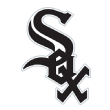 The number: .679. White Sox outfielders and designated hitters hit a combined .242/.299/.380 in 2019, which added up to the second-lowest OPS in the majors from those positions.
The number: .679. White Sox outfielders and designated hitters hit a combined .242/.299/.380 in 2019, which added up to the second-lowest OPS in the majors from those positions.
The White Sox had a terrible offense in 2019. They’ve had terrible offenses for a long time now. They haven’t finished in the top 10 in the American League in runs, home runs or walks since 2014, when they were fourth in home runs and eighth in runs. They haven’t finished in the top half of the league in runs scored since 2012. Their long-standing problem has been getting on base, in large degree due to an anti-walk infliction. The last time they were the higher than seventh in the AL in OBP was back in 2006, when they ranked sixth. They drew the fewest walks in the AL in 2019. No player drew even 50 freebies.
The White Sox addressed their DH issues by signing Edwin Encarnacion. They acquired Nomar Mazara to play right field. Rookie Luis Robert will take over in center field. Rookie Nick Madrigal will take over at second base early in the season. With continued growth from Eloy Jimenez (31 home runs as a rookie) and Yoan Moncada (141 OPS+) and more of the same from Tim Anderson, they could rank in the top half of the league in runs.
That’s not a guarantee, however. Getting on base enough could remain a problem. Robert has tantalizing tools, but he walked just 28 times in 551 plate appearances in the minors. Mazara had a .318 OBP last year, right in line with his career mark. He’s still just 25, but he hasn’t improved in four seasons in the majors. Anderson never walks and is a good bet to regress from his league-leading .335 average. Jimenez had a .315 OBP.
Still, the White Sox did a nice job addressing their holes in signing Encarnacion, Yasmani Grandal (who drew 109 walks last year), Dallas Keuchel and Gio Gonzalez. There’s no doubt with all this young talent they’re going to be one of the must-watch teams of the season. If they get on base and those veteran starters produce, they have a chance to make some noise.
Cleveland Indians
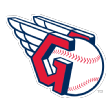 The number: 4.6. The combined WAR of Cleveland outfielders, ranking 18th in the majors.
The number: 4.6. The combined WAR of Cleveland outfielders, ranking 18th in the majors.
It was not the worst outfield in the majors, but it’s worth noting that none of the teams that ranked below the Indians made the playoffs. Even if we isolate just offense, the Indians weren’t the worst, ranking tied for 21st in wOBA.
Still, the Indians went into the 2018-19 offseason knowing the outfield was the team’s biggest liability. They added Jordan Luplow (who crushed lefties) and Jake Bauers (who didn’t crush anybody), and then were forced to add Yasiel Puig and Franmil Reyes during the season. Puig is a free agent while Reyes will presumably spend the majority of his time in 2020 at DH.
This offseason has seen a similar lukewarm response. The one addition has been Delino DeShields Jr., a solid defensive center fielder with a weak bat. Right now the only sure thing is that Luplow will be in the lineup against left-handers and Oscar Mercado will play somewhere. Otherwise, it’s Delino DeShields, Bauers, Greg Allen, Tyler Naquin and Bradley Zimmer fighting for playing time. Not exactly Belle, Lofton and Ramirez.
One thing that will help: Just avoid being awful. Allen, Bauers, Leonys Martin and Carlos Gonzalez soaked up 765 plate appearances in the outfield and the highest OPS of the four was .651. If the Indians can just get league average production from their outfielders, the rest of the team may be good enough to win back the AL Central.
Detroit Tigers
 The number: 77. That was Detroit’s wRC+, worst in the majors.
The number: 77. That was Detroit’s wRC+, worst in the majors.
That’s shorthand for weighted runs created — a park-adjusted catch-all offensive figure where 100 is league average. Not only was Detroit’s 77 wRC+ the worst in 2019, it was the second-worst of the decade:
2013 Marlins: 74
2019 Tigers: 77
2019 Marlins: 79
2010 Mariners: 79
2010 Astros: 79
Their big moves have been to add Jonathan Schoop (100 wRC+ in 2019) and C.J. Cron (101). Both have some pop, making them league-average offensive performers at the plate. Tigers first basemen hit .248/.308/.402 and their second basemen hit .228/.271/.363, so Cron and Schoop still project as upgrades — just not big ones. Since they’re on one-year deals, they could also turn into trade bait if they do perform well. The Tigers scored 109 fewer runs than the next-worst team in the AL. It’s hard to be that awful again, but the Tigers still appear to have the worst offense in the league.
Kansas City Royals
 The number: 324. Jorge Soler, Whit Merrifield and Hunter Dozier created an estimated 324 runs, making the Royals one of just eight teams with at least three players to create 95 runs.
The number: 324. Jorge Soler, Whit Merrifield and Hunter Dozier created an estimated 324 runs, making the Royals one of just eight teams with at least three players to create 95 runs.
These three were the rare bright spots in a 103-loss season. Soler led the AL and set a franchise record with 48 home runs, becoming one of the most unexpected home run leaders of all time (in parts of five seasons he had hit just 38 career home runs). His 118 runs created were the most by a Royals player since Carlos Beltran had 123 in 2001. Merrifield, like Soler, played in all 162 games and led the AL with 206 hits as he hit .302 with 67 extra-base hits. Dozier had what was hopefully a breakout season, hitting .279/.348/.522.
Now, the problem: the Royals still finished next-to-last in the league in runs scored. Consider their rankings in wOBA in the AL:
Catcher: 13th
First base: last
Shortstop: last
Center field: last
They’ll get Salvador Perez back at catcher, but he hasn’t posted an OBP over .300 since 2013, so he’s really only a minor upgrade. They signed Maikel Franco, which moves Dozier to first base or right field, but Franco is coming off a .297 OBP and 80 OPS+ season. Merrifield may take over full time in center field, which opens second base up for Nicky Lopez, who had the worst OPS+ in the majors last year among any player with 400 plate appearances. If Soler and Dozier regress, the offense could end up at the bottom of the AL.
Minnesota Twins
 The number: 44. Twins catchers set a record with 44 home runs.
The number: 44. Twins catchers set a record with 44 home runs.
The previous record was 43, shared by four teams — the 1997 Dodgers and 1999 Mets, when Mike Piazza was the primary catcher; the 1953 Dodgers with Roy Campanella; and the 2003 Braves, the season Javy Lopez hit 43 home runs. Those three catchers, however, were all big-time power hitters. In 2018, Minnesota backstops hit just 13 home runs, ranking 24th in the majors. This was not expected.
Mitch Garver was the driving force. After hitting seven home runs in 302 at-bats in 2018, he had one of the most shocking seasons of the decade, hitting 31 in 311 at-bats, 30 of those as a catcher. Working with personal hitting coach Jason Columbus in offseason, he tweaked his mechanics, focusing on pulling the ball in the air to left field. His hard-hit rate improved from 38.8 to 50%, his launch angle was higher and his average exit velocity increased.
Of course, everyone on the Twins hit home runs in 2019 — they set the single-season record with 307, as five players reached 30. All those guys are back in 2020 along with free agent Josh Donaldson, who mashed 37 of his own. The Twins scored 939 runs in 2019, second in the AL, and it’s not outrageous to envision even more offense with Donaldson in the lineup.
The question: What happens if the Super Happy Fun Ball doesn’t return in 2020? It’s worth noting that no team had a higher year-to-year increase in home runs than the Twins — by a large margin:
Twins: +141
Cubs: +89
Astros: +83
Braves: +74
Mets: +72
The good news is the Twins did hit .270, second in the AL, and ranked third in doubles, so they weren’t just a one-dimensional offense. Second-year second baseman Luis Arraez, who hit .334 and walked more than he struck out as a rookie, will give the team a different look as well as the likely full-time second baseman. And maybe Garver hits 40 home runs this year.
AL West
Houston Astros
 The number: 500. That’s the number of innings the Astros have lost from their 2019 pitching staff with the departures of Gerrit Cole, Wade Miley, Will Harris and Hector Rondon.
The number: 500. That’s the number of innings the Astros have lost from their 2019 pitching staff with the departures of Gerrit Cole, Wade Miley, Will Harris and Hector Rondon.
Of course, there are other numbers from the Astros we’ve been heatedly engaged with this offseason, such as the number of bangs on garbage cans. It’s impossible to know what effect the fallout from the cheating scandal will have on Astros hitters in 2020 — the commissioner’s report indicated nothing untoward was going on in 2019, although there remains a lot of skepticism that the Astros had simply moved on from garbage cans to a different system.
So let’s focus on what’s happened this offseason in the transactions department. The Astros have lost those 500 innings of very good pitching (a combined 3.02 ERA). That’s over a third of the team’s total innings and the only major leaguer the Astros have brought in is former Rays reliever Austin Pruitt. Yes, they have pitchers in place to soak up some of those innings: A full season of Zack Greinke, Lance McCullers Jr. returning from Tommy John surgery, and Jose Urquidy, who should step into the rotation. Josh James, Brad Peacock and Forrest Whitley are also potential starters.
Lots of options there, but good luck replacing Cole. Does this make the Astros vulnerable? Perhaps. The well-oiled machine of Jeff Luhnow, AJ Hinch and a talented roster has lost two-thirds of that hierarchy along with a 20-game winner. I guess we’ll learn a lot about Alex Bregman, Jose Altuve, George Springer and friends in 2020.
Los Angeles Angels
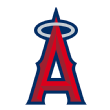 The number: 0. The Angels didn’t have a single starting pitcher make at least 20 starts in 2019.
The number: 0. The Angels didn’t have a single starting pitcher make at least 20 starts in 2019.
How rare is this? Since 1996, it had never happened. In fact, out of 716 team seasons, 709 teams had least two pitchers make at least 20 starts. Guess which team had the worst rotation ERA in the American League in 2019.
This has been an ongoing issue for the Angels. Over the past four seasons they have had just 10 pitchers make at least 20 starts in a season. And get this, it’s 10 different pitchers: Hector Santiago, Matt Shoemaker, Jered Weaver, Parker Bridwell, Jesse Chavez, Ricky Nolasco, JC Ramirez, Jaime Barria, Andrew Heaney and Tyler Skaggs. No wonder Mike Trout can’t get into the playoffs.
The Angels have addressed this by signing Julio Teheran and trading for Dylan Bundy. On the bright side, Teheran has made 30-plus starts all seven of his major league seasons. He’s one of the most durable starters in the game. Bundy has averaged 30 starts over the past three seasons. Are those two enough to help the Angels get over .500?
Oakland Athletics
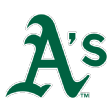 The number: 21. That’s the combined starts in 2019 made by Frankie Montas (16), Sean Manaea (5), Jesus Luzardo (0) and A.J. Puk (0).
The number: 21. That’s the combined starts in 2019 made by Frankie Montas (16), Sean Manaea (5), Jesus Luzardo (0) and A.J. Puk (0).
Why do the A’s, who finished 10 games behind the Astros in 2019, have a chance to win the AL West? It’s not just Cole’s departure from the Houston rotation. Oakland’s rotation should be a lot deeper and potentially better. Consider:
• Montas was in the midst of a breakout season when suspended in late June for 80 games after a positive PED test. At the time he was 9-2 with a 2.70 ERA and 97 strikeouts in 90 innings. He has a high-octane power sinker, a wipeout slider and wipeout splitter. Obviously, we don’t know how much the PEDs helped, but he’s always had big-time stuff and it appeared he put it all together. Let’s see if he can do it over 30 starts.
• Manaea returned late in the season after shoulder surgery in 2018 and looked great, with a 1.21 ERA over five starts. His strikeout rate spiked compared to his career norms, so he’ll to prove he can maintain that level over a full season.
• Luzardo entered 2019 as a candidate to make the Opening Day rotation, but suffered a left rotator cuff strain in spring training and then a lat strain in July. He dominated in 12 innings in relief in September and remains one of the top pitching prospects in the minors. The A’s will watch his innings, but he’s a strong Rookie of the Year candidate.
• Puk returned from Tommy John surgery to also reach the majors in September, fanning 13 in 11⅓ relief innings. He could end up in the bullpen as a potential Josh Hader-type weapon.
On top of that, the A’s still have Mike Fiers (15-4, 3.90 ERA) and Chris Bassitt (10-5, 3.81 ERA). It’s one of the best rotations in the league, backed up by one of the better bullpens. Watch out, Houston.
Seattle Mariners
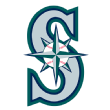 The number: 67. The Mariners set an all-time record for players used in a season.
The number: 67. The Mariners set an all-time record for players used in a season.
That total included 40 different pitchers, not including the two position players who pitched. This is no way to run a franchise, even in a rebuilding/transitional/”we’re not trying to win” season. Unfortunately, look for the revolving door to continue in 2020. Mariners beat writers have attempted to project the Opening Day roster and have suggested that every job in the bullpen is up for grabs. The closer at the end of the season was 30-year-old journeyman Matt Magill, purchased from the Twins in July.
The starting rotation, meanwhile, includes just three locks — Marco Gonzales, Yusei Kikuchi and Kendall Graveman, and Graveman didn’t pitch in the majors last year. Rookies Justus Sheffield and Justin Dunn may occupy the other two spots. Sheffield was so bad in Triple-A last year that he had to be sent back down to Double-A (where he fared much better). Dunn hasn’t pitched in Triple-A, so starting the year in the majors would be an aggressive promotion.
ESPN Daily Newsletter: Sign up now!
Jerry Dipoto is going to have to let the youngsters sink or swim — including position players like J.P. Crawford, Shed Long and Kyle Lewis — and hopefully see prospects like Evan White, Jarred Kelenic and Logan Gilbert reach the majors at some point. Still, it’s going to be a long season in Seattle and don’t rule out them playing down to the level of the Orioles and Tigers.
Texas Rangers
 The number: 7.22. That was the ERA for Rangers starters not named Mike Minor or Lance Lynn.
The number: 7.22. That was the ERA for Rangers starters not named Mike Minor or Lance Lynn.
The top of the Texas rotation was very good in 2019 — via Baseball-Reference’s calculations, Minor was the second-best starter in the AL and Lynn the third-best starter (both ranking higher than Cole). Even if you disagree with that specific assessment, you can agree that the rest of the Texas rotation was an epic debacle.
So the Rangers went out and did the obvious: They added some starting pitchers, trading for Corey Kluber and signing Kyle Gibson and Jordan Lyles as free agents. For the first time in a long time, the Rangers have five viable big league starters and if Kluber bounces back and Minor and Lynn come close to their 2019 performances, they’ll have one of the best 1-2-3 trios in the league.
Is that enough to push the Rangers into contention status? I’m not so sure. The only significant move on the position-player side of things has been signing Todd Frazier — and the position players were worse than the pitchers in 2019. In fact, according to the metrics, the pitching staff wasn’t actually so dreadful:
Baseball-Reference
Pitchers: 22.4 WAR (second in AL)
Non-pitchers: 10.9 WAR (tied for second worst in AL)
FanGraphs
Pitchers: 14.2 WAR (eighth in AL)
Non-pitchers: 9.2 WAR (13th in AL)
The two sites disagree on the value of the pitchers (both agree that Minor and Lynn were exceptional), but they agree that the Rangers position players were collectively awful. Let’s just say that Nolan Arenado will look like a nice addition.
